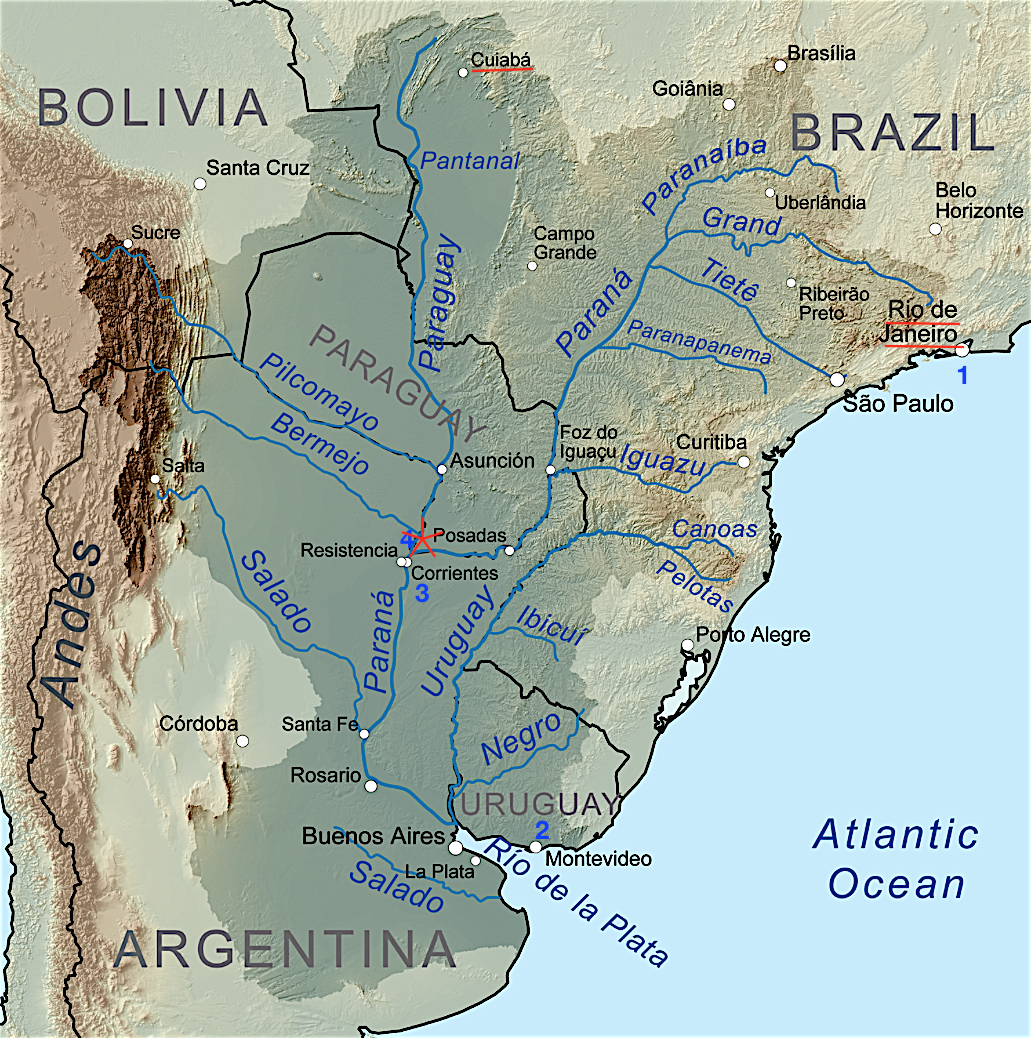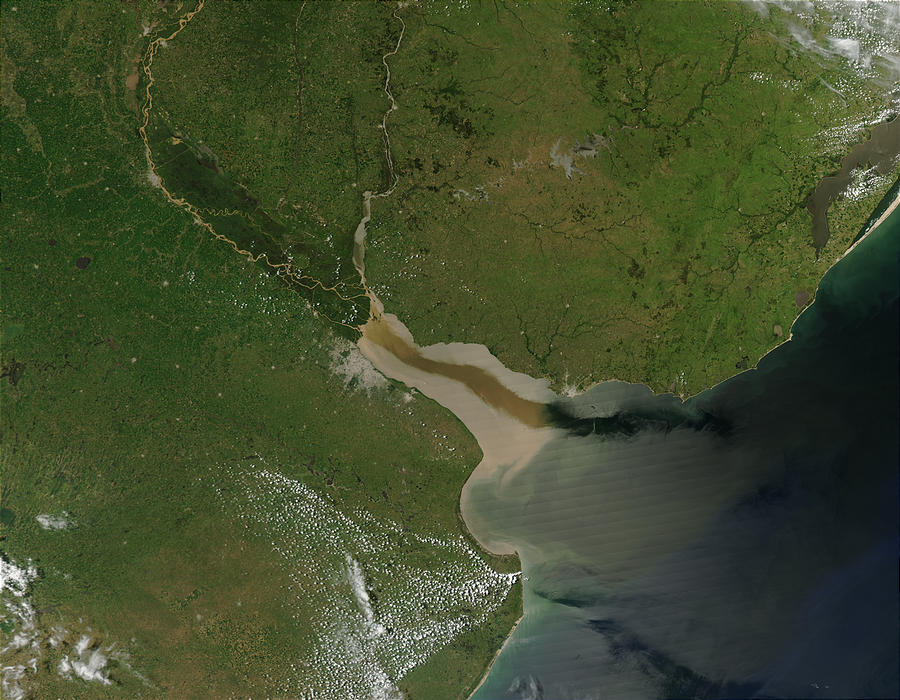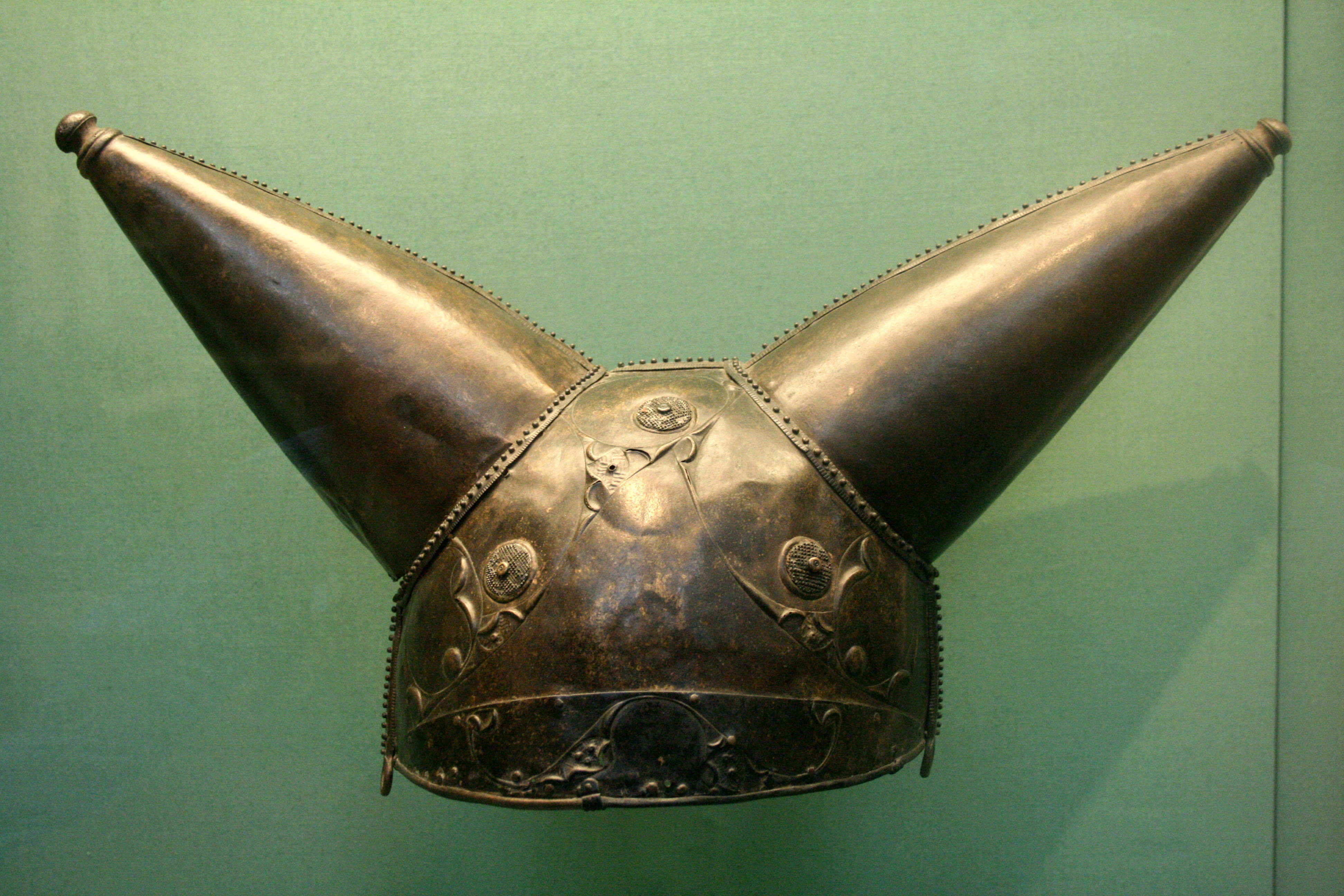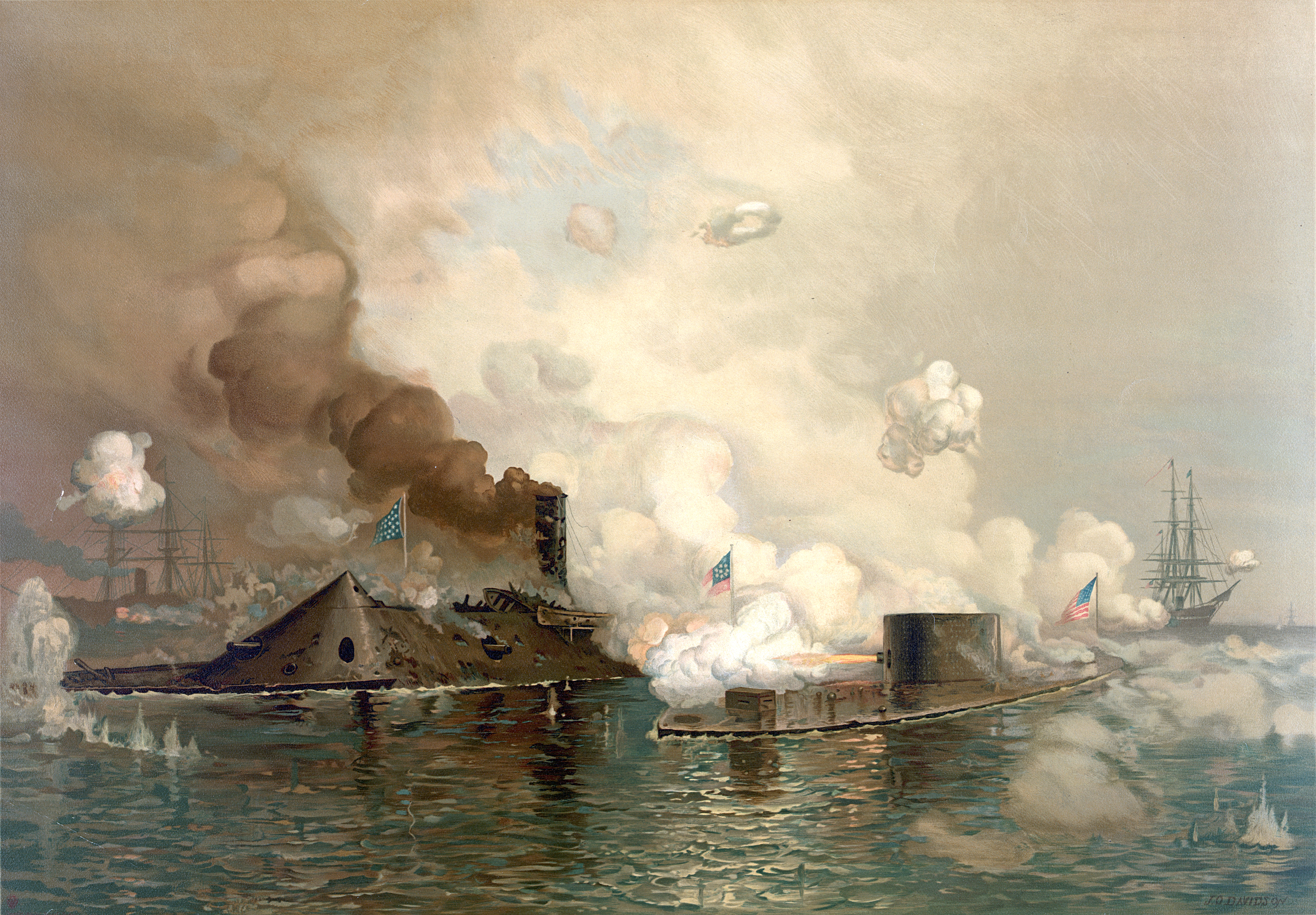|
Passage Of Humaitá
The Passage of Humaitá (Portuguese language, Portuguese: ''Passagem de Humaitá'') was an operation of riverine warfare during the Paraguayan War − the most lethal in South American history − in which a force of six Imperial Brazilian Navy armoured vessels was ordered to dash past under the guns of the Paraguayan fortress of Humaitá. Some competent neutral observers had considered that the feat was very nearly impossible. The purpose of the exercise was to stop the Paraguayans resupplying the fortress by river, and to provide the Empire of Brazil and its Treaty of the Triple Alliance, Allies with a much-needed propaganda victory. The attempt took place on 19 February 1868 and was successful – the attackers had hit upon the fortress' weakness. It restored the reputation of the Brazilian navy and the Brazilian Empire's financial credit, and caused the Paraguayans to evacuate their capital Asunción. Some authors have considered that it was the turning point or culminati ... [...More Info...] [...Related Items...] OR: [Wikipedia] [Google] [Baidu] |
Siege Of Humaitá
The siege of Humaitá was a military operation in which the Triple Alliance (Brazil, Argentina and Uruguay) flanked, besieged and captured the Fortress of Humaitá, a Paraguayan stronghold that was referred to as the Gibraltar of South America. It fell on 26 July 1868. It can be considered the key event of the Paraguayan War since the fortress had frustrated the allied advance into Paraguay for more than two years. However it did not surrender as the defenders escaped, most of them to fight another day. The allies were severely criticised for the time it took them to take the installation, whose strength was belittled. But they were essentially a pre-professional army fighting a long way from home against an unaccustomed defence tactic: artillery in prepared, entrenched positions firing a hail of anti-personnel shot. Further, they were battling in unprecedented terrain — most of it impassible, all of it unmapped — in the wetlands of southern Paraguay. It gave the Pa ... [...More Info...] [...Related Items...] OR: [Wikipedia] [Google] [Baidu] |
Corrientes Province
Corrientes (, ‘currents’ or ‘streams’; ), officially the Province of Corrientes (; ) is a Provinces of Argentina, province in northeast Argentina, in the Mesopotamia, Argentina, Mesopotamia region. It is surrounded by (from the north, clockwise): Paraguay, the province of Misiones Province, Misiones, Brazil, Uruguay, and the provinces of Entre Ríos Province, Entre Rios, Santa Fe Province, Santa Fe and Chaco Province, Chaco. History Before the arrival of the Spanish conquest, the Kaingang people, Kaingang, Charrua and Guarani people, Guaraní lived in a big area that also covered most of the current province of Corrientes. The city of Corrientes was founded on 3 April 1588 by Juan Torres de Vera y Aragón as a mid-stop between Asunción and Buenos Aires; the city flourished thanks to the traffic from the route. Society of Jesus, Jesuits erected Missionary, missions in the north of the province, where they dedicated themselves to the expansion of the faith. In the wars of ... [...More Info...] [...Related Items...] OR: [Wikipedia] [Google] [Baidu] |
Río De La Plata
The Río de la Plata (; ), also called the River Plate or La Plata River in English, is the estuary formed by the confluence of the Uruguay River and the Paraná River at Punta Gorda, Colonia, Punta Gorda. It empties into the Atlantic Ocean and forms a funnel-shaped indentation on the southeastern coastline of South America. Depending on the geographer, the Río de la Plata may be considered a river, an estuary, a gulf, or a marginal sea. If considered a river, it is the widest in the world, with a maximum width of . The river is about long and widens from about at its source to about at its mouth. It forms part of Argentina–Uruguay border, the border between Argentina and Uruguay. The name Río de la Plata is also used to refer to the populations along the estuary, especially the main Port city, port cities of Buenos Aires and Montevideo, where Rioplatense Spanish is spoken and tango culture developed. The coasts of the river are the most densely populated areas of Urugua ... [...More Info...] [...Related Items...] OR: [Wikipedia] [Google] [Baidu] |
1868 Lengthy Lines Of Communication
Events January * January 2 – British Expedition to Abyssinia: Robert Napier leads an expedition to free captive British officials and missionaries. * January 3 – The 15-year-old Mutsuhito, Emperor Meiji of Japan, declares the ''Meiji Restoration'', his own restoration to full power, under the influence of supporters from the Chōshū and Satsuma Domains, and against the supporters of the Tokugawa shogunate, triggering the Boshin War. * January 5 – Paraguayan War: Brazilian Army commander Luís Alves de Lima e Silva, Duke of Caxias, enters Asunción, Paraguay's capital. Some days later he declares the war is over. Nevertheless, Francisco Solano López, Paraguay's president, prepares guerrillas to fight in the countryside. * January 7 – The Arkansas constitutional convention meets in Little Rock. * January 9 – Penal transportation from Britain to Australia ends, with arrival of the convict ship ''Hougoumont'' in Western Australia, after an 89-d ... [...More Info...] [...Related Items...] OR: [Wikipedia] [Google] [Baidu] |
City Of London
The City of London, also known as ''the City'', is a Ceremonial counties of England, ceremonial county and Districts of England, local government district with City status in the United Kingdom, city status in England. It is the Old town, historic centre of London, though it forms only a small part of the larger Greater London metropolis. The City of London had a population of 8,583 at the 2021 United Kingdom census, 2021 census, however over 500,000 people were employed in the area as of 2019. It has an area of , the source of the nickname ''the Square Mile''. The City is a unique local authority area governed by the City of London Corporation, which is led by the Lord Mayor of London, Lord Mayor of the City of London. Together with Canary Wharf and the West End of London, West End, the City of London forms the primary central business district of London, which is one of the leading financial centres of the world. The Bank of England and the London Stock Exchange are both ba ... [...More Info...] [...Related Items...] OR: [Wikipedia] [Google] [Baidu] |
Marquis Of Caxias
A marquess (; ) is a nobleman of high hereditary rank in various European peerages and in those of some of their former colonies. The German-language equivalent is Markgraf (margrave). A woman with the rank of a marquess or the wife (or widow) of a marquess is a marchioness () or marquise (). These titles are also used to translate equivalent Asian styles, as in Imperial China and Imperial Japan. Etymology The word ''marquess'' entered the English language from the Old French ("ruler of a border area") in the late 13th or early 14th century. The French word was derived from ("frontier"), itself descended from the Middle Latin ("frontier"), from which the modern English word ''March (territory), march'' also descends. The distinction between governors of frontier territories and interior territories was made as early as the founding of the Roman Empire when some provinces were set aside for administration by the senate and more unpacified or vulnerable provinces were admini ... [...More Info...] [...Related Items...] OR: [Wikipedia] [Google] [Baidu] |
Bartolomé Mitre
Bartolomé Mitre (26 June 1821 – 19 January 1906) was an Argentine statesman, soldier and author. He was President of Argentina from 1862 to 1868 and the first president of Argentine Civil Wars#National unification, unified Argentina. Mitre is known as a versatile statesman, military man, politician, journalist, historian, writer and poet. He was a major figure in the history of Argentina during the second half of the 19th century. He was the figure that best characterized liberalism in Argentina, but he was a moderate and flexible liberal, not dogmatic. Early life Mitre was born on 26 June 1821 in Buenos Aires. His father was of Greek descent and the family name was originally Mitropoulos.Gardner, James. "Buenos Aires: The Biography of a City", 110. (St Martin's Press, 2015, ). In 1831, his family settled in Uruguay. He became a soldier, and graduated in 1839 from the Military School of Montevideo, with the rank of second lieutenant of artillery. Also a journalist, his ... [...More Info...] [...Related Items...] OR: [Wikipedia] [Google] [Baidu] |
Ironclad Warship
An ironclad was a steam-propelled warship protected by steel or iron armor constructed from 1859 to the early 1890s. The ironclad was developed as a result of the vulnerability of wooden warships to explosive or incendiary shells. The first ironclad battleship, , was launched by the French Navy in November 1859, narrowly preempting the British Royal Navy. However, Britain built the first completely iron-hulled warships. Ironclads were first used in warfare in 1862 during the American Civil War, when they operated against wooden ships, and against each other at the Battle of Hampton Roads in Virginia. Their performance demonstrated that the ironclad had replaced the unarmored ship of the line as the most powerful warship afloat. Ironclad gunboats became very successful in the American Civil War. Ironclads were designed for several uses, including as high-seas battleships, long-range cruisers, and coastal defense ships. Rapid development of warship design in the late 19th ... [...More Info...] [...Related Items...] OR: [Wikipedia] [Google] [Baidu] |
Battle Of Curupayty
The Battle of Curupayty was a key battle in the Paraguayan War. On the morning on 22 September 1866, the joint force of Brazilian, Argentine, and Uruguayan armies attacked Paraguayan fortified trenches on Curupayty. The Paraguayans were led by general José Eduvigis Díaz. This position was held by 5,000 men and 49 cannons, some of them in hidden places out of the attackers view. The Imperial Brazilian Navy gave support to the 20,000 assailants, but the ships had to keep some distance from the guns at the fortress of Humaitá, which led to the lack of accuracy and impact of the ship's fire. The navy's failure was crucial at the later ground battle result.Hooker, T.D., 2008, The Paraguayan War, Nottingham: Foundry Books, The Paraguayans were also successful in misleading their foes: a trench drew most of the Brazilian fire, but the Paraguayan troops were located elsewhere. Around 20 percent of the almost 20,000 allied (Brazilian and Argentine) troops involved in the attack were ... [...More Info...] [...Related Items...] OR: [Wikipedia] [Google] [Baidu] |
Outwork
An outwork is a minor fortification built or established outside the principal fortification limits, detached or semidetached. Outworks such as ravelins, lunettes (demilunes), flèches and caponier A caponier is a type of defensive structure in a fortification. Fire from this point could cover the ditch beyond the curtain wall (fortification), curtain wall to deter any attempt to storm the wall. The word originates from the French ', meaning ...s to shield bastions and fortification curtains from direct battery were developed in the 16th century. Later, the increasing scale of warfare and the greater resources available to the besieger accelerated this development, and systems of outworks grew increasingly elaborate and sprawling as a means of slowing the attacker's progress and making it more costly. When taken by an enemy force, their lack of rear-facing ramparts left them totally open to fire from the main works. [...More Info...] [...Related Items...] OR: [Wikipedia] [Google] [Baidu] |
Chain Boom
A chain is a serial assembly of connected pieces, called links, typically made of metal, with an overall character similar to that of a rope in that it is flexible and curved in compression but linear, rigid, and load-bearing in tension. A chain may consist of two or more links. Chains can be classified by their design, which can be dictated by their use: * Those designed for lifting, such as when used with a hoist; for pulling; or for securing, such as with a bicycle lock, have links that are torus-shaped, which make the chain flexible in two dimensions (the fixed third dimension being a chain's length). Small chains serving as jewellery are a mostly decorative analogue of such types. * Those designed for transferring power in machines have links designed to mesh with the teeth of the sprockets of the machine, and are flexible in only one dimension. They are known as roller chains, though there are also non-roller chains such as block chains. Two distinct chains can be ... [...More Info...] [...Related Items...] OR: [Wikipedia] [Google] [Baidu] |
Humaitá In Context
Humaitá is a town and district on the Paraguay River in southern Paraguay. During the Paraguayan War, it served as the main Paraguayan stronghold from 1866 until its fall in August 1868. Up to 24,000 troops were housed there at one point. It served as the de facto residence of the Paraguayan government until March 1868. Being 275km south of Asunción, Hamuaitá has a great historical and cultural heritage, with portions of the old fortifications—including some large earthworks—still visible. It also possesses the remains of a Jesuit church dating from the 18th century. Toponymy Humaitá comes from the Guaraní words "" (meaning ancient) and "" (meaning stone). Geography The predominant geography in the zone is a sheet of low areas, of whitish land, without prominent waviness. Due to the proximity of the Paraguay River, the increase of the waves overwhelms the whole bordering zone, therefore the geopolitical importance that the city had in the past. Climate The clim ... [...More Info...] [...Related Items...] OR: [Wikipedia] [Google] [Baidu] |








